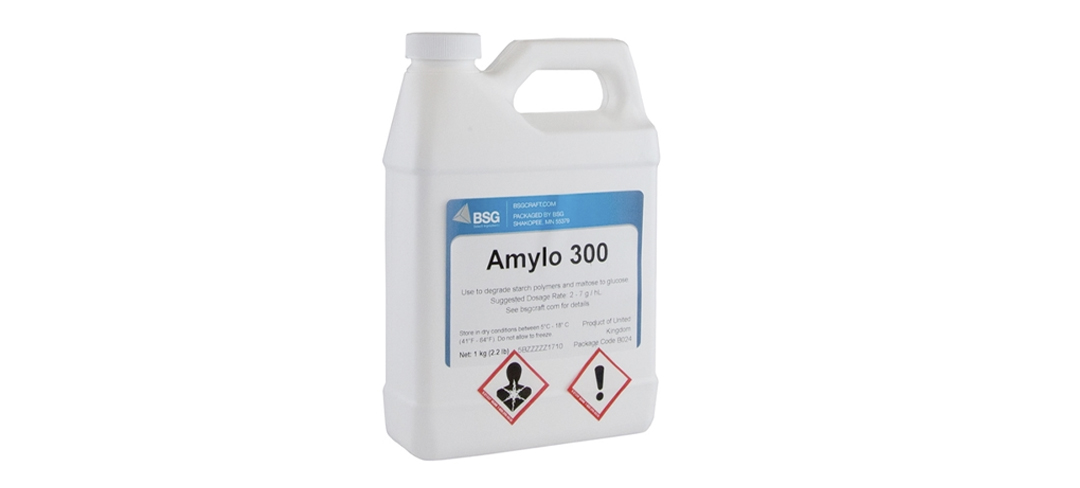When Crispy Met Hazy: Remember Brut IPA?

For a hot minute in the pre-pandemic beforetimes, a beer style struck a balance between the terpene-rich atmospherics of New England IPA and the lean, crisp drinkability of Pilsner. With the second coming of the Roaring Twenties this summer, Brut IPA is ripe for rediscovery as an easy seasonal that won’t disrupt production schedules, a low-carb differentiator for taproom guests, and a common ground for devotees of both hazies and crispy bois.
With a name that deliberately suggests the bone-dry effervescence of Champagne, Brut IPA features late additions of (usually) tropical or juicy hops combined with a terminal gravity at or near 0°P, facilitated by the use of an amyloglucosidase enzyme. By cleaving everything from maltose up through complex starch molecules into readily-assimilable glucose, the use of exogenous enzymes allows for a very highly attenuated beer.
Brut IPA Ingredients
The key to Brut IPA is the amyloglucosidase enzyme – Amylo 300™ from Kerry. Brewers and distillers have used Amylo 300™ for years to mash high-adjunct grists, to create low-carb lagers, and to keep TGs low for imperial stouts and triple IPAs; but something magical happens when it’s used to marry the hop-centric flavor of American IPA with the insistent drinkability of a German Pils.
Brut IPAs are generally quite pale, so Pilsner malt or an extra-light pale malt makes an ideal base. Unmalted grains like corn and rice can enhance both the pale color and snappy finish, while oats or wheat bring in some secondary flavors and add a bit of texture to the body without sacrificing dryness – Amylo 300™ makes short work of the starch matrix in all of them.
Hop options can range from classic West Coast IPA expressions to the juicy and tropical, which when propped against a lean and dry background can show the NEIPA usual suspects in a different light. Emphasis is typically on late and cold-side additions to maximize aromatics, since a little IBUs go a long way with such a low TG.
Yeast selection tends to be brewer’s choice, whether a clean, neutral strain that stays out of the hops’ way or one that is more interactive with them via biotransformation.
Brut IPA In the Brewhouse
The biggest question we get about brewing Brut IPA is “When do I add the Amylo?” As with so many other things in brewing, the answer is “it depends.” Amylo 300™ can be added either to the mash, or on the cold side.
Advantages of adding Amylo 300™ to the mash are that it is denatured in mashout and boiling, so active enzymes are not carried over to the cold side and yeast can be harvested and repitched as normal. For this application, Amylo 300™ should be added to the MLT at a ratio of 0.1 – 0.5 mL per pound of grist (0.25 – 1.2 mL per kg).

For production of Brut IPA, Amylo 300™ can also be added on the cold side – usually to the FV, at some point between pitching yeast and the end of fermentation. Because the enzyme works more slowly at the comparatively cooler temperatures of fermentation, extra time may be required to reach terminal gravity. Since there’s no denaturing step as with a mash addition of the enzyme, brewers will need to take care to ensure fermentation is complete and take precautions to prevent refermentation of packaged product; the enzyme can also be carried over in harvested yeast. For cold side additions, Kerry recommends a dosage rate of 1.2 – 4.8 g per bbl.
Summer of the Brut
Besides having no shortage of punny name options (I Am Brut, Brut of All Evil, Brut 66), Brut IPA is primed to appeal to taproom and patio guests looking for a subtle twist on old favorites, or those just looking for some pre-2020 beer nerd nostalgia.
Contact your BSG Sales Manager to help get the comeback underway!